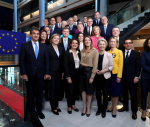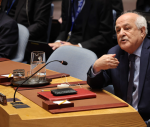You are here
Unpacking America's ‘soft landing’
Aug 10,2023 - Last updated at Aug 10,2023
AUSTIN — Back in 2021 and early 2022, a posse of prominent economists, including Lawrence H. Summers, Jason Furman, and Kenneth Rogoff, all of Harvard, criticised the Biden administration’s fiscal and investment programme, and pressured the US Federal Reserve to raise interest rates. Their argument was that inflation, fueled by federal spending, would prove “persistent”, requiring a sustained shift to austerity. Unemployment, sadly, would have to rise to at least 6.5 per cent for several years, according to one study touted by Furman.
While this trio (and many like-minded commentators) failed to sway the White House or Congress, they were in tune with Fed Chair Jerome Powell and his colleagues, who began hiking interest rates in early 2022 and have kept at it. The Fed’s rapid monetary-policy tightening soon prompted progressives, led by Senator Elizabeth Warren of Massachusetts, to fear that it will trigger a recession, mass unemployment, and (though they did not say it) a Republican victory in 2024.
But the macroeconomic situation today has confounded both positions. Contrary to those advocating austerity, inflation peaked on its own in mid-2022 (owing partly to sales from the US Strategic Petroleum Reserve). There was no persistence, no surge from the 2021 fiscal stimulus, and no wage-driven inflation from low unemployment. The models and historical precedents that the Harvard trio had relied on clearly no longer apply (if they ever did).
There also has been no recession, unemployment has not risen, and higher interest rates have not deterred business investment. Residential construction took a hit, but the construction sector overall soon shook that off, and the banking crisis earlier this year has not led to financial contagion. A recession remains possible, of course, but so far there are very few warning signs.
These happy circumstances have led some observers to congratulate Powell and the Fed on achieving a “soft landing”. But crediting the Fed is magical thinking. There is no way, under any theory or precedent, that rate hikes beginning in January 2022 could have knocked back inflation by July of the same year. Whatever its consequences down the road, the Fed’s policy tightening has been irrelevant to the inflation slowdown so far.
But why have not 18 months of rising interest rates had any perceptible effect on employment, investment, or growth? That is as much of a puzzle for progressives as the fall of inflation is for austerians, especially considering that the pandemic-driven boost to household savings has ended, and Congress has started cutting back modestly on various spending programmes.
Part of the answer surely lies in new tax incentives for investment, notably in semiconductors and renewable energy. But those sectors are fairly small, and their growth will have accounted for perhaps a hundred thousand jobs. Another part of the answer may lie in direct investment by companies fleeing Europe’s industrial decline, itself a byproduct of sanctions against Russia. But, again, these numbers cannot be very large.
What else is going on? One factor, suggested to me by Robert Aliber, an emeritus professor of economics and international finance at the University of Chicago, is that the top quarter of US households became cash-rich during the pandemic. These households represent the largest share of US purchasing power, and their spending is largely immune to high interest rates.
Another suggestion comes from Warren Mosler, the godfather of Modern Monetary Theory, who notes that US national debt has risen to nearly 130 per cent of GDP, up from about 60 per cent in the early 2000s. The net interest paid on that debt increased by 35 per cent from 2021 to 2022, reaching 2 per cent of GDP, and about 70 per cent of those payments went to the US private sector. If one adds the effect of interest paid (starting in 2008) on $3 trillion in bank reserves, the fiscal support through this channel has been substantial.
History supports Mosler’s conjecture. Back in 1981, US federal debt was only about 30 per cent of GDP, and much of it was in fixed-interest, long-term bonds, with no interest paid on bank reserves. As a result, then Fed Chair Paul Volcker’s shockingly large interest-rate increases mostly hit private debtors and business investment, and the offsetting fiscal boost from interest payments was small.
In contrast, when the federal debt exceeded 100 per cent of GDP in 1946, almost all of it was in war bonds held by US households. Despite yielding only 2 per cent in interest, those bonds provided a boost to private incomes and a base for mortgage borrowing through the 1950s, a time of largely stable middle-class prosperity.
The “fiscal channel” for interest-rate payments is an inconvenient concept for those who wring their hands over the “burden” of public debt. It suggests that Powell’s rate hikes may be powerless to slow GDP. Indeed, additional rate increases could even be expansionary, at least up to a point.
As in other extreme cases, like Argentina, where interest payments amount to a quarter or more of GDP, rate hikes will increase costs for businesses, pushing up prices, and also apply price pressures on fixed assets (land, minerals, oil) that will show up in our inflation measures. That, in turn, will discourage saving, spur borrowing, and impel the Fed to raise rates even more.
Over time, this process will lead toward economic chaos. But, if this narrative has merit and high interest rates do not bring on the recession that the Fed so clearly desires, it will be difficult to change course. Ideology and habit can nurture the hope that doubling down on an ineffective policy will make it work.
What might stop this dynamic? One answer is severe fiscal austerity, with budget cuts used to provoke the recession that interest rates have failed to bring about. We are already seeing pressure for this option from Wall Street. Last week, Fitch downgraded its credit rating on US sovereign debt, in a move clearly timed to scare Congress as its budget deadlines approach. Such a policy shift, if it is strong enough, would complete the ongoing obliteration of the American middle class.
Obviously, it would be better to do the opposite — to empower the middle class and disempower the bankers. That would means cutting interest rates while regulating new credit flows, controlling strategic prices, and strengthening fiscal support for household incomes and well-paying jobs. People with decent and secure incomes can reduce their reliance on unstable loans.
That is what we ought to do. But don’t hold your breath.
James K. Galbraith, a former executive director of the Joint Economic Committee of the US Congress, is professor at the Lyndon B. Johnson School of Public Affairs at the University of Texas at Austin. Copyright: Project Syndicate, 2023.











